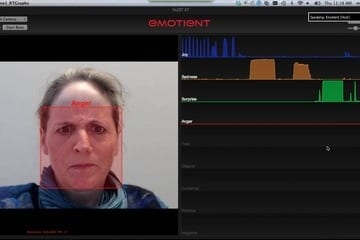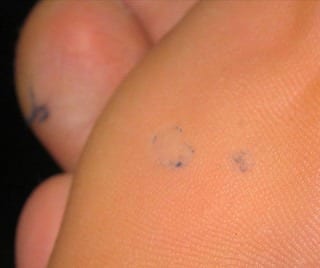
If someone is described as “smiling, but not with their eyes,” that person is likely faking the smile. But what does that mean, exactly? And how can one tell a real grin from a fake one?
New software by California-based company Emotient can do just that. Using a simple digital camera, Emotient’s software can analyze a human face and determine whether that person is feeling joy, sadness, surprise, anger, fear, disgust, contempt or any combination of those seven emotions.
“There’s often a disconnect between what people say and what people do and what people think,” said Marian Bartlett, co-founder and lead scientist at Emotient. The company’s software, called Facet, can reconnect those dots by accurately reading the emotions registering on a person’s face in a single photograph or video frame. All it needs is a resolution of at least 40 by 40 pixels.
Using Facet on a video sequence produces even more interesting results, because the software can track the fluctuations and strengths of emotion over time, and even capture “microexpressions,” or little flickers of emotion that pass over people’s faces before they can control themselves or are even aware they’ve registered an emotion.
“Even when somebody wants to keep a neutral face, you get microexpressions,” Bartlett told LiveScience. That’s because the human body has two different motor systems for controlling facial muscles, and the spontaneous one is slightly faster than the primary motor system, which controls deliberate motion. That means microexpressions will slip out — and as long as they appear on a single frame of video footage, Facet can recognize them, the company says.
The software can also pick up on other subtle facial signs that a human might miss. In the case of “smiling, but not with your eyes,” Bartlett explained that when people smile sincerely, a muscle called the orbicularis oculi, also known as the “crow’s feet muscle,” contracts, creating the wrinkles at the eyes’ edge that are sometimes called “crow’s feet.” In these types of cases, the software does need images clearer than 40 pixels, but the required resolution is still within a common webcam’s capabilities.
Medical applications
So, what are some uses for software that can identify human emotions based on facial expressions? Facet’s applications are incredibly far-reaching, from treating children with autism to play-testing video games.
The Latest on: Facial recognition
[google_news title=”” keyword=”facial recognition” num_posts=”10″ blurb_length=”0″ show_thumb=”left”]
via Google News
The Latest on: Facial recognition
- The Breach of a Face Recognition Firm Reveals a Hidden Danger of Biometricson May 2, 2024 at 8:24 am
Outabox, an Australian firm that scanned faces for bars and clubs, suffered a breach that shows the problems with giving companies your biometric data.
- DC daily roundup: DMV innovation’s movers and shakers; DDOT’s social media troll; facial recognition tech at DCA and BWIon May 2, 2024 at 2:44 am
We have a stellar lineup of folks making a big difference in the tech and startup world here. Whether they run an accelerator, host networking events or uplift the next generation of entrepreneurs, these people are essential to the DMV’s economy. I can’t wait for you to learn more about them.
- Police Say a Simple Warning Will Prevent Face Recognition Wrongful Arrests. That's Just Not True.on April 30, 2024 at 11:47 am
Even when police heed warnings to take additional investigative steps, they exacerbate the unreliability of face recognition results.
- Facial recognition coming to LA transit after passenger fatally stabbedon April 30, 2024 at 10:57 am
Transit officials in Los Angeles have declared a public safety emergency over the stabbing of a 66-year-old woman in the city’s Metro transit system.
- Facial recognition off limits to MTA for fare evasion enforcementon April 29, 2024 at 6:07 am
Facial recognition technology is now formally off limits to the Metropolitan Transportation Authority in its quest to recoup some of the hundreds of millions in unpaid fares each year. Tucked into the newly-passed state budget is a provision stipulating ...
via Bing News










